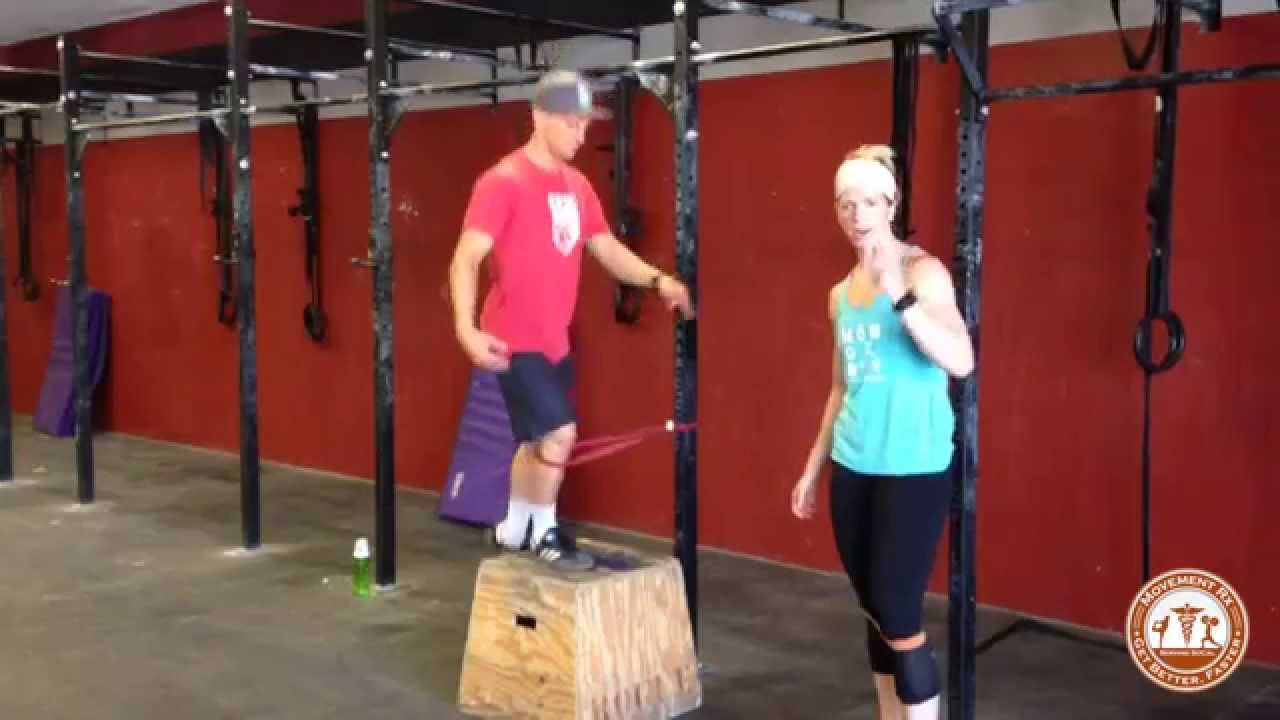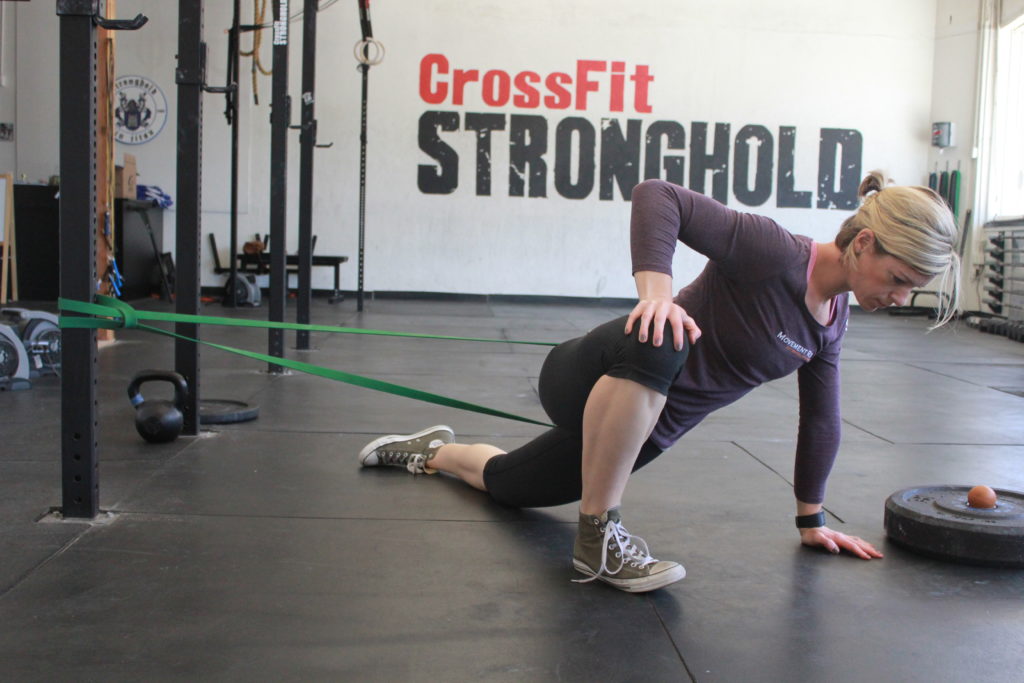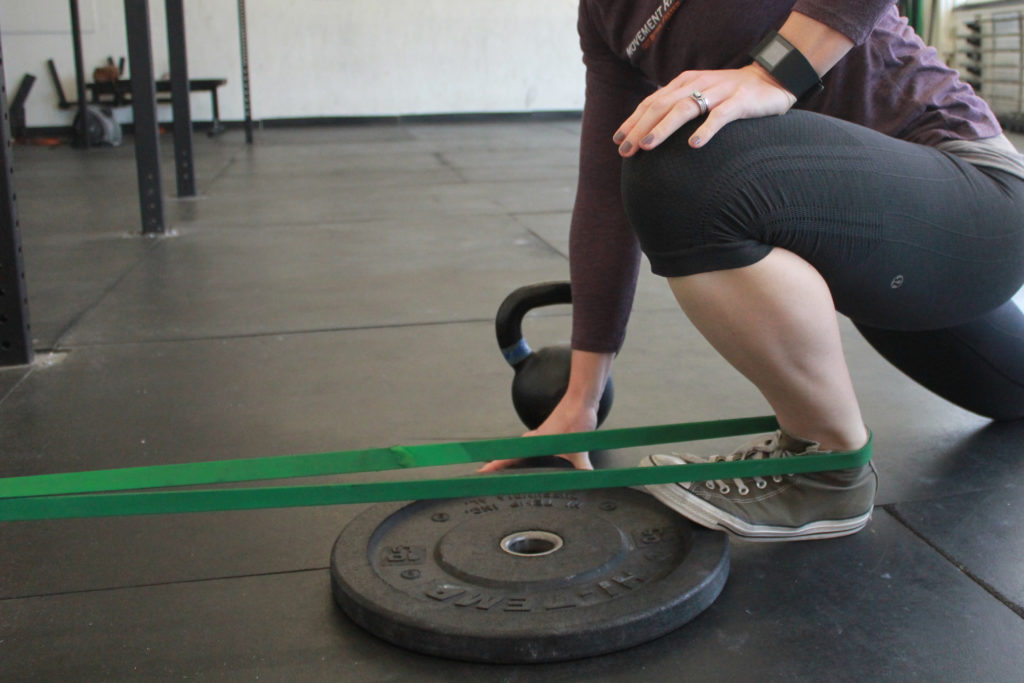Box Jump – Common Faults, Your Bones, And How to Fix It!
BOX JUMP – COMMON FAULTS, YOUR BONES, AND HOW TO DO IT RIGHT!
Your shins love ‘em. Some days you love them, too. And most other days you don’t. The seemingly simple movement of jumping on and off a box tells movement experts a lot more than you’d expect. Let’s dig into the box jump, shall we?

Topics in the post include the following:
- What is so great about a box jump?
- Warm up and mobility ideas to prepare tissues
- Common faults of box jumpers
- How to fix those common faults
What is so great about a box jump?
Box Jumps are a plyometric exercise, which is defined as a stretch-shortening cycle of your motor units (muscles and nerves). The rapid eccentric muscle action in the box jump landing stimulates a stretch reflex and storage of elastic energy. This allows increased force production during take-off. Through this cycle, it will help develop power rapidly, absorb power rapidly, and replicate motions we need in sport and life.
Efficient box jumps, just like running, snatching, or cleaning require motor control, good tissue length and mobility. According to studies performed on adolescent females, when performed correctly box jumping is also effective in improving peak bone mass, lower extremity performance, and static balance (Witke, KA, Snow CM). They can help shape, strengthen, and improve the aging adults performance as well.
Warm-up and mobility ideas to prepare tissues
You should start by getting hot and sweaty. A good warm-up might include 5 minutes of alternating 30 seconds of running with 30 seconds of lunges. (Running is technically a series of small single-leg jumps, so it’s a perfect precursor to box jumps.)
Mobility ideas
A. Start by opening up your posterior chain. A great start is a banded lunge mobilization.

Opening up your posterior joint capsule will increase your ability to generate torque and create more space for the hip flexion required ruing the lengthening or eccentric phase of any plyometric training.
B. Follow this up by performing banded ankle mobilizations to help open up your ankle range of motion.
 The Ankle is essential for the rapid stretch when you prepare to jump and the landing or absorption of your body when your feet hit the box or the ground. An ankle with good range of motion takes some of the stress off of the knee and Achilles.
The Ankle is essential for the rapid stretch when you prepare to jump and the landing or absorption of your body when your feet hit the box or the ground. An ankle with good range of motion takes some of the stress off of the knee and Achilles.
3 Common faults of Box Jumps
(Dr. T from Movement Rx is teaming up with Coach Greg Kuchan from San Diego Athletics to review the common faults and give quick down and dirty drills to help fix these mechanical faults)
Knee Fault: Knees caving in
The knee caving in during the initiation and landing of a box jump or plyometric drill, or a rebound on the basketball court is not an efficient way to jump and land nor is it awesome for building strength, endurance, and power in the knee, hip, ankle, foot, low back.
Hip Hinge Fault: Bending forward
Landing with the upper torso collapsing forward is a sign of excessive hip flexion and can create problems up and down the chain. It is very inefficient, and with multiple reps your low back and the front of your hips will receive undue stress.
Balance: Stronger on one side
Even with a trained eye, this is the one fault we cannot see as easily. Someone may have a perfect looking squat, box jump, or double under, yet their single leg strength is not equal between left and right. This may be due to a neuro-muscular inefficiency, and a good balance test can help identify where you are “dumping” power in your movement.
Balance test: Remove your shoes, and stand with one leg lifted to 90 degrees for 10 seconds. Repeat with your eyes closed and note any differences. Do the same with the other leg and note the differences from left to right.
If you are missing the ability to balance it can create a power deficit in that limb meaning that the rate at which work gets accomplished will be lessened and or slower. You want your circuits all working efficiently, as the imbalance over time leads to overcompensation and injury.
Fixing these common faults
Each of these common faults and be fixed using a variety of motor control (i.e. activation) drills during your warm-up.
Fixing the knee fault:
- Single Leg Step Ups (2 sets x 10 reps per leg)- start with less hip flexion and work to get the knee higher than the hip
- Single Leg Step Up with a hop (2 sets x 10 reps per leg)
- Another Single Leg Step Up with a band (2 sets x 10 reps per leg). Loop a below the knee that pulls laterally, providing a tactile cue to help support and promote good position
- Squat Jumps with Band Below the Knee (2 sets x 10 reps per leg). Vary the height of the jump as needed, keeping the knees out even while in the air, and landing SOFTLY on the box and the floor. –
Fixing the hip flexion fault
- Jump with hands behind your head- this is a tactile cue to keep upper torso upright (2 sets x 10 reps)
- Jump and reach hands towards an object like a pull-up bar or rings that you will be able to barely reach (2 sets x 10 reps) The bar serves as a visual cue to help you achieve appropriate position of the hip and upper torso when you land on the box
Fixing Balance Deficits
- 3 Dimensional Skater Hops (EYES OPEN). Making sure you land softly, perform these single-leg movements with a 5 second hold. Move forward, then laterally, then behind. Be sure to load the hips first and drive the knee out to recruit the posterior chain when landing as a way to help with the eccentric/energy storage phase.
- 3 Dimensional Jumps on Plates (EYES OPEN). Hopping on and off a plate, forward, laterally, and backwards, hold at the top of the plate in a mini-squat for 5 seconds.
- 3 Dimensional Skater Hops (EYES CLOSED). Repeat the skater hops above, being mindful of safety. Clear out any objects or people first.
References:
- Pose Tech. Scientific Research and Pose Method. Impact Forces on the Knee Joint- A Comparative study on Running styles. http://www.posetech.com/library/cs-05-2001.html. Published May 2001, Updated 2001, Accessed May 2015. 2001
- Baechle T, Earle R. Essentials of Strength and Conditioning, 3rd Edition. Champlaign Il. 2008
- Boyle, Mike. “The Idiot Box.” Strengthcoach.com. 05 May 2009. Web. 06 Apr. 2009
- Witke KA, Snow CM. The Effects of Plymetric Jump Training on Bone Mass in Adolescent Girls. Med Sci Sports Exerc.June: 32 (6): 1051-7. 2000
- Yasaharu N et el. The effects of jump and balance training on knee kinematics and electromyography during a single limb drop landing: pre-post intervention study. Sports Medicine, Arthroscopy, Rehabilitation, Therapy & Technology.3:14. 2011
If you want to learn more about this topic, click HERE.
